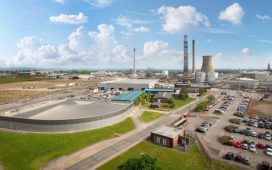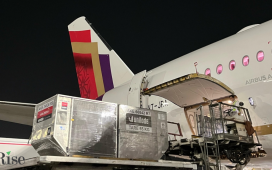After a hurricane hit Florida, 484 buildings just at the Tyndall Air Force base were destroyed or damaged beyond repair. Five years later, it’s part of a $5 billion, nine-year rebuilding effort the Washington Post describes as rare “blank slate.” The plan is “not merely to rebuild it, but to construct what the U.S. military calls ‘the installation of the future,’ which will be able to withstand rising seas, stronger storms and other threats…”
The rebuild at Tyndall, which is expected to continue into 2027, marks the largest military construction project undertaken by the Pentagon. “Think of it as the Air Force throwing its Costco card down on the table and buying buildings in bulk,” said Michael Dwyer, deputy chief of the Natural Disaster Recovery Division. A dizzying array of new technologies and approaches have been incorporated into the effort, from semiautonomous robot dogs patrolling the grounds to artificial intelligence software designed to detect and deter any armed person who enters the base.
But the most robust funding is aimed at making Tyndall more efficient, connected and resilient in the face of a warming world. Structures under construction — from dormitory complexes to a child care center to hangars that will house three new squadrons of the F-35A Lightning II later this year — are being built to withstand winds in excess of 165 mph. Steel frames, high-impact windows, concrete facades and roofing with additional bracing are among the features meant to weather the stronger storms to come.
At nearby Panama City, sea level rise has accelerated in recent years, with federal data showing seas have risen there more than 4 inches since 2010. Planners factored in the potential for as much as 7 feet of sea level rise by the end of the century, and as a result placed the “vast majority” of new buildings at elevations that should be safe from storm surges for decades, Dwyer said. In addition, sensors placed near the low spots of buildings will send alerts the moment a flood threatens. The Air Force also has created a “digital twin” of Tyndall — essentially, a virtual duplicate of the base that allows officials to simulate how roads, buildings and other infrastructure would hold up in different scenarios, such as a hurricane or historic rainfall events.
Other efforts include restoring the beach’s 10-foot sand dunes and its rocky shoreline, along with “the installation of submerged oyster reef breakwater that can reduce wave energy and erosion.”
But the article points out that the Air Force also has a second hope for their base: “that the lessons unfolding here can be replicated at other bases around the world that will face — or already are facing — similar threats…










